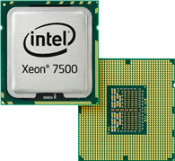
IT abroad: Chips, combining calculating engines and graphics processing units, developed
Two major inventors of computer microprocessors — Intel Corp. and Advanced Micro Devices (AMD) will soon unveil new chips, which will bring together calculating engines and graphics processing units.
The corporations are going to present the design trend which is based on bringing together two long-separate classes of products - microprocessors, the calculating engines that run most PC software, and graphics processing units - at the Consumer Electronics Show in the USA (CES 2011) on January 6 - 9 2011. Such an integration will become one of the major recent achievements in the field of processor technologies for PCs. The approach "is going to change the way people build PCs and buy PCs," Paul Otellini, Intel's chief executive, predicted.
But the benefits won't be measurable until after the CES show, when computer makers are expected to disclose their plans for using the technology. And some industry executives insist that many PC users will continue to seek even better performance by picking systems with separate graphics-processing-unit chips.
Intel, which supplies roughly 80% of the microprocessors used in PCs, is using the event to introduce a broad overhaul of its flagship Core product line using a design that is code-named Sandy Bridge. The products add GPU circuitry that Intel has offered in companion chipsets, as well as video-processing features and other undisclosed features aimed at improving the visual experience of using PCs—technologies Intel plans to market as part of a campaign called Visibly Smart. Mr. Otellini said demand is "very, very strong" for the chips, which are expected to be used in hundreds of new designs for laptop and desktop PCs at various price points.
The trend is at least as important for AMD, perennial underdog to Intel in the microprocessor market. AMD spent $5.4 billion to buy ATI Technologies, one of two big makers of GPUs, and vowed then to combine that technology with its microprocessors by early 2009 in an initiative it calls Fusion. That effort took longer than the company anticipated. AMD is using the CES trade show to introduce microprocessors with GPU circuitry that are targeted at cheap laptops. But it doesn't expect to offer high-end Fusion chips that could directly compete with Intel's overhauled Core line until the middle of next year.

